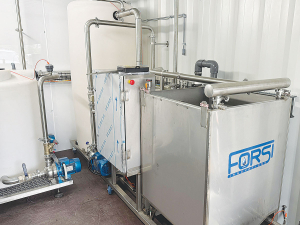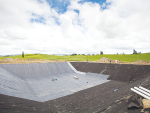Water treatment technology company FORSI Innovations Ltd may be headquartered in the rural town of Matamata but the business is anything but provincial in its ambitions.
This family-owned water treatment manufacturer has quietly become a pioneering force in the filtration industry, with a growing portfolio of advanced, high-performance systems deployed across New Zealand and as far afield as Hong Kong.
Founded in 2002, FORSI says its origins lie in agricultural water treatment—specifically, the removal of iron and manganese from water used on dairy farms. Over the past two decades, the company has evolved into a sophisticated engineering and R&D-led organisation focused on solving complex water treatment challenges across industries.
Its most technologically advanced system to date is a proprietary dairy effluent treatment plant, capable of converting raw effluent into three valuable outputs: a compostable solid fertiliser, a concentrated liquid nutrient suitable for targeted land application, and potable water that meets New Zealand drinking water standards. The result is a closed-loop system that exemplifies sustainability, resource recovery, and operational efficiency for the agrisector.
In 2023, FORSI initiated a breakthrough research programme into Silicon Carbide flat sheet ceramic membrane technology—a next-generation filtration medium prized for its durability, chemical resistance, and energy efficiency. After two years of development, FORSI commissioned its first commercial system, designed to treat high iron and manganese content from a mixed bore water source feeding a new residential development.
“Our ceramic membrane trials have demonstrated exceptional performance and versatility across a wide range of water treatment scenarios,” says Craig Hawes, operations manager at FORSI Innovations.
“To our knowledge, we are the only New Zealand- based company to successfully commercialise this specific membrane technology.”
The implications are significant, according to Howe.
Flat sheet ceramic membranes offer a compelling value proposition for industries under increasing pressure to comply with environmental regulations and water reuse mandates. Capable of filtering out suspended solids, oil emulsions, and bacteria, these membranes are ideally suited to sectors such as municipal water supply, landfill management, industrial wastewater treatment, and food and beverage processing.
Advantages of FORSI’s ceramic membrane technology:
- Exceptional robustness and lifespan
- Chemical and thermal resistance
- Low maintenance and operational costs
- High filtration precision and scalability
Applications currently in development or operation include:
- Drinking water filtration
- Membrane bioreactors (MBR)
- Sludge concentration
- Landfill leachate treatment
- Oil-water separation
- Process fluid recovery
Hawes says every FORSI system is fully customised.
www.forsi.co.nz


















